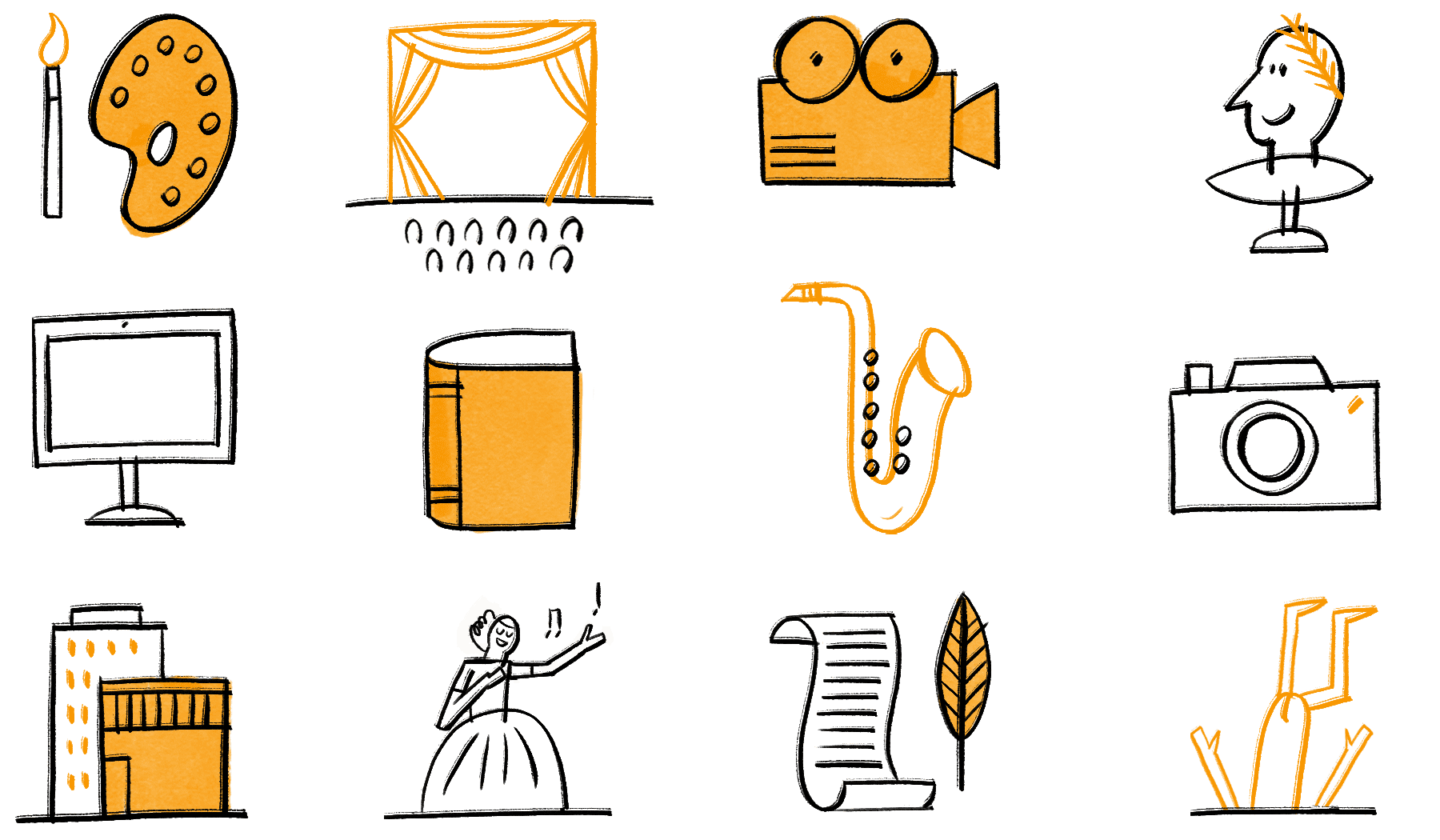Things you can do with the cards:
use them as material to show students overlaps and differences between dance and other art forms. You can also use them in designing your choreography.
combine them with cards from other focus areas. Take a look through the Choreographer Book in this regard too: for instance, the complex structures of Ludwig van Beethoven’s string quartet “Große Fuge op. 133” inspired Belgian choreographer Anne Teresa De Keersmaeker to create her choreography “Die große Fuge” (1992).
 You can find ideas for developing assignments here.
You can find ideas for developing assignments here.

